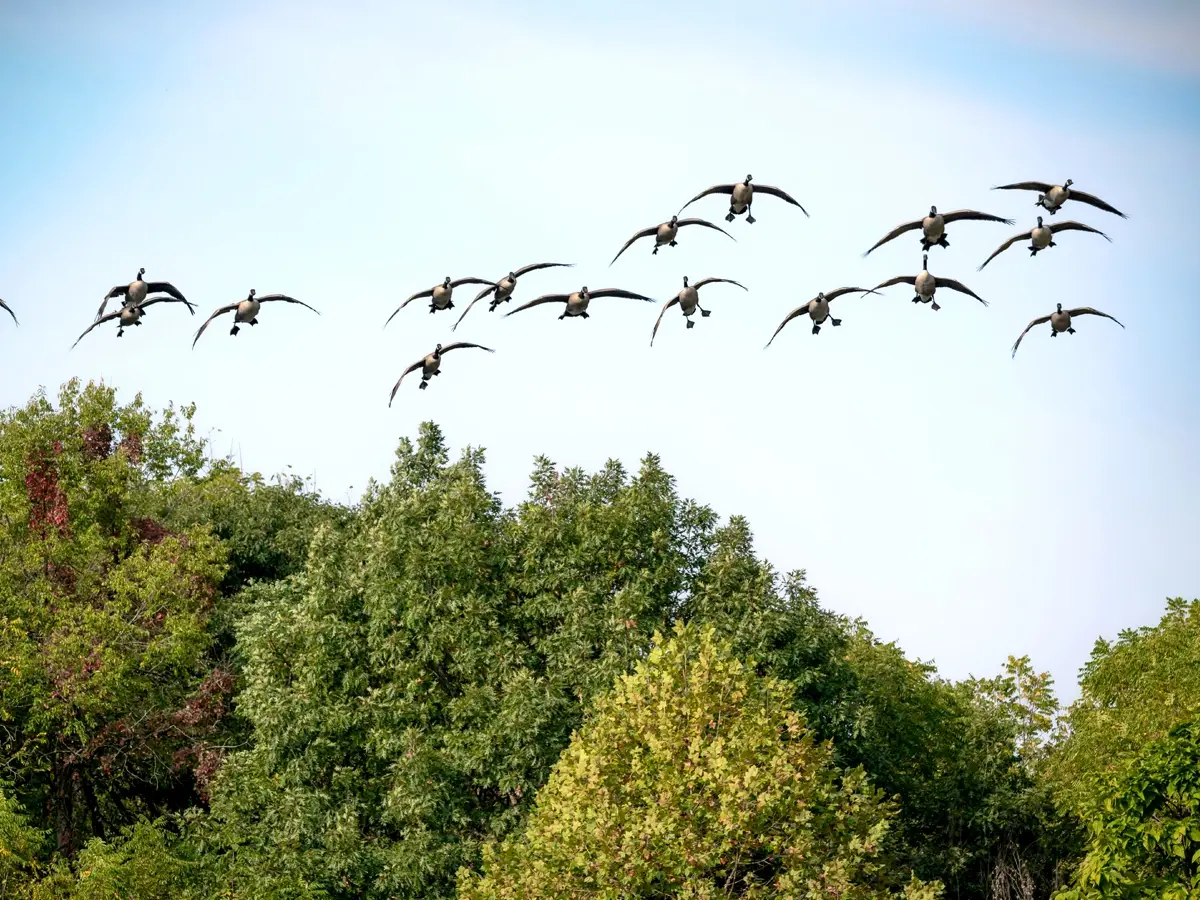
Located in the Northern part of Tanzania, the Serengeti National Park stands as a beacon of biodiversity, drawing nature enthusiasts from around the world. While famed for its iconic wildlife, the park is also a haven for avian diversity, boasting an impressive range of bird species that enchant visitors with their colors, calls, and behaviors.
Join us as we embark on an exhilarating journey through the Serengeti’s skies, where a kaleidoscope of bird species awaits to captivate and inspire. From the flamboyant plumage of the Lilac-breasted Roller to the haunting calls of the African Fish Eagle, each bird we encounter tells a story of adaptation, survival, and the intricate dance of life.
Serengeti National Park is the largest park in Africa, covering 5,700 square miles (14,763 square kilometers). With its 3,706,581 acres of open savanna, this famous park is a wildlife preserve unmatched in its blooming state. The mixed vegetation types of Serengeti National Park including woodland, riverine forests, grasslands, and acacia trees, all make Serengeti National Park a prime bird-watching destination.
The vast landscape of the Serengeti is home to more than 500 resident and migrant bird species. These birds, both big and small, single or in flocks, will add melody to your safari from the moment you wake up to the time you lay back down to dream about the adventures you have experienced during the day.
Let us look at the 10 of Serengeti’s most spottable birds. You are likely to come across many of them on your safari. No binoculars are needed!
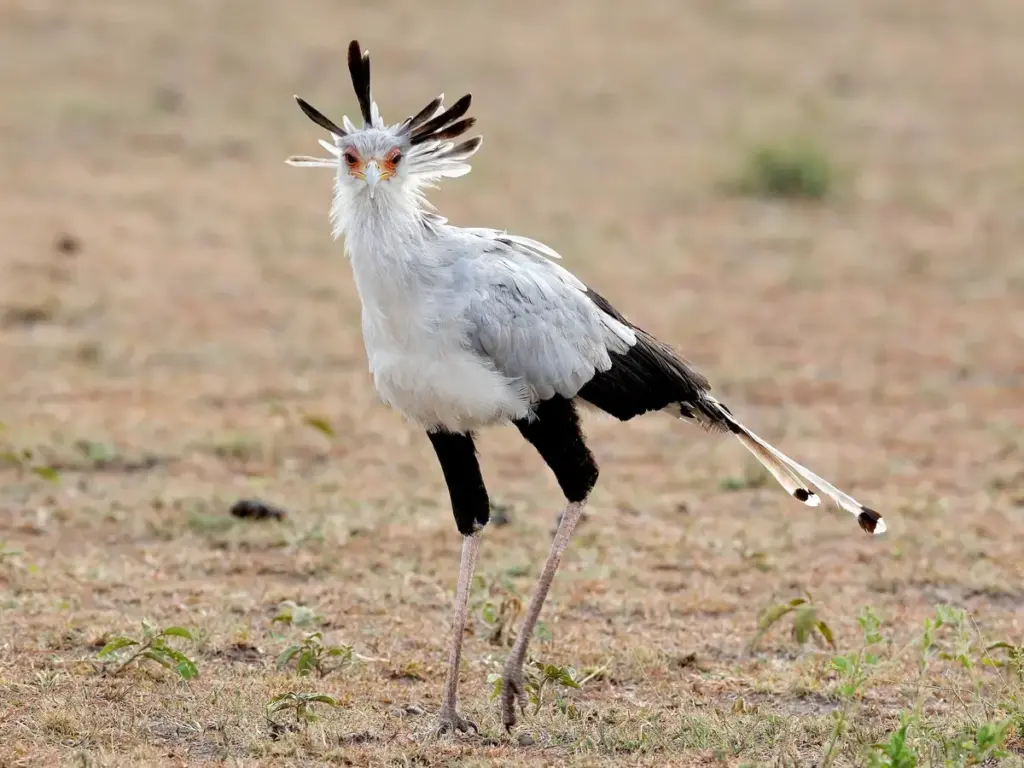
1. Secretary Bird (Sagittarius serpentarius): Secretary Bird stands tall on long, stilt-like legs, and cuts an impressive figure as it strides across the savanna. Equipped with a distinctive crest of feathers atop its head, this bird of prey is a formidable hunter, using its powerful legs to dispatch snakes and other small animals.
Fun Fact: The bird’s name is most likely drawn from “saqu ettair”, meaning hunter-bird. However, the long, black crest feathers on its head which resemble the quill pens that male secretaries in the 19th century kept tucked behind their ears have been suggested as the origin of the name.
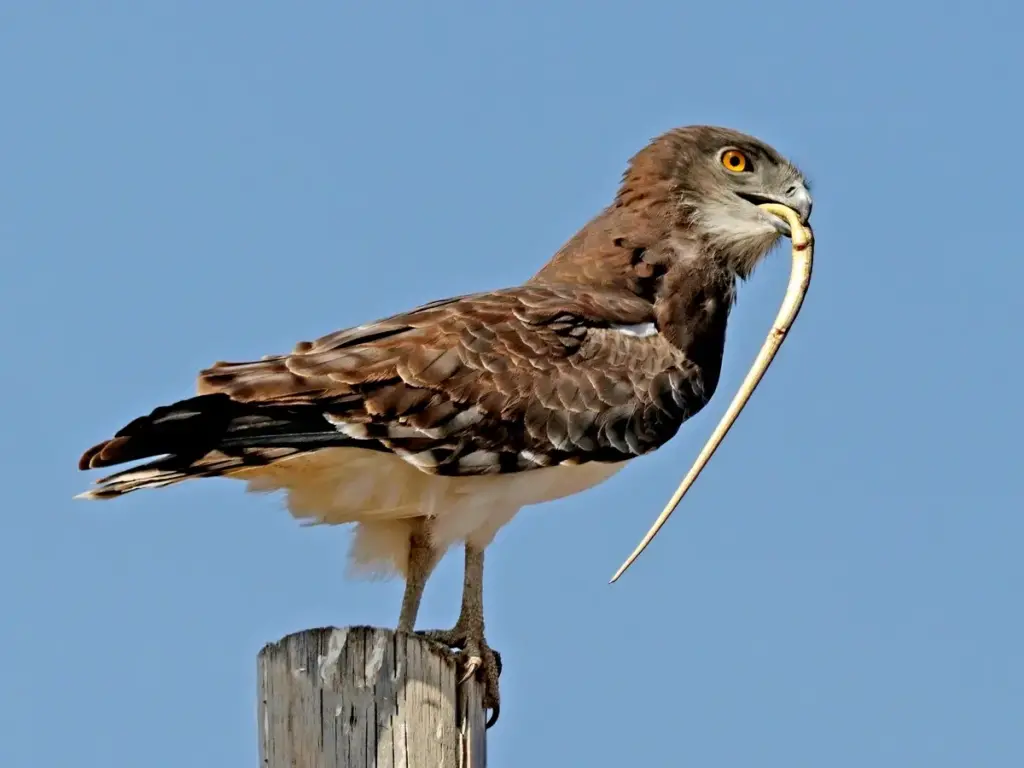
2. Black-Chested Snake-Eagle (Circaetus Pectoralis): As the name suggests, Black-Chested Snake-Eagle has snake features on the menu and is also known to hunt and forage for other small animals like lizards, rabbits, rodents, and even fish. This eagle will swallow snakes whole and fly back to its nest to regurgitate a whole snake to the hungry chicks.
Fun Fact: Once this bird of prey spots its victim from the air, it dives and crushes the skull of its prey using its sharply clawed talons.
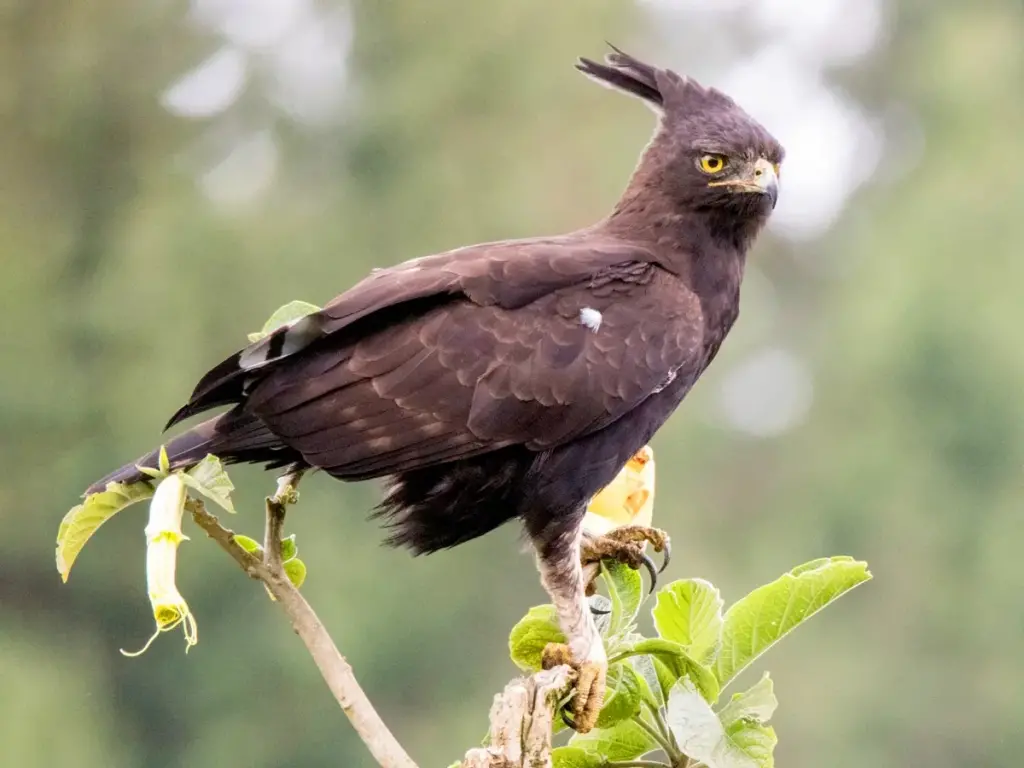
3. Long-Crested Eagle (Lophaetus Occipitalis): The Long-Crested Eagle is one of the most common birds in the Serengeti. Its highly distinctive crest made up of around six or so long feathers in its crown makes it easily distinguishable from the other birds or prey. This eagle can be seen perched in prominent positions as it scans the ground for its favorite prey – Mice.
Fun Fact: Its call is a distinctive noisy screeching “kik kik kik” – sound and is most often heard during the breeding season.
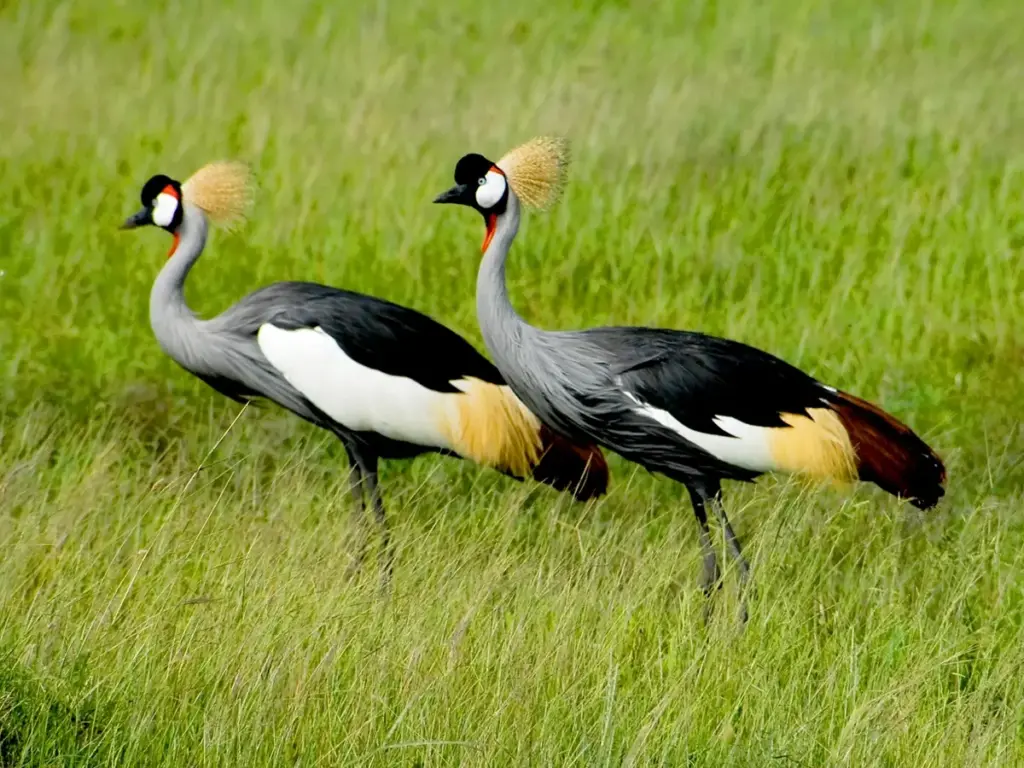
4. Gray-Crowned Crane (Balearica Regulorum): With its elegant silhouette and striking plumage, the Grey-crowned Crane cuts a regal figure as it strides gracefully through the grasslands. This iconic bird is a symbol of vitality and grace in the Serengeti landscape.
Fun Fact: During the mating season, they are known to bob, hop, prance and even leap over 2 meters in the air as part of their elegant and sometimes seemingly choreographed mating dance.
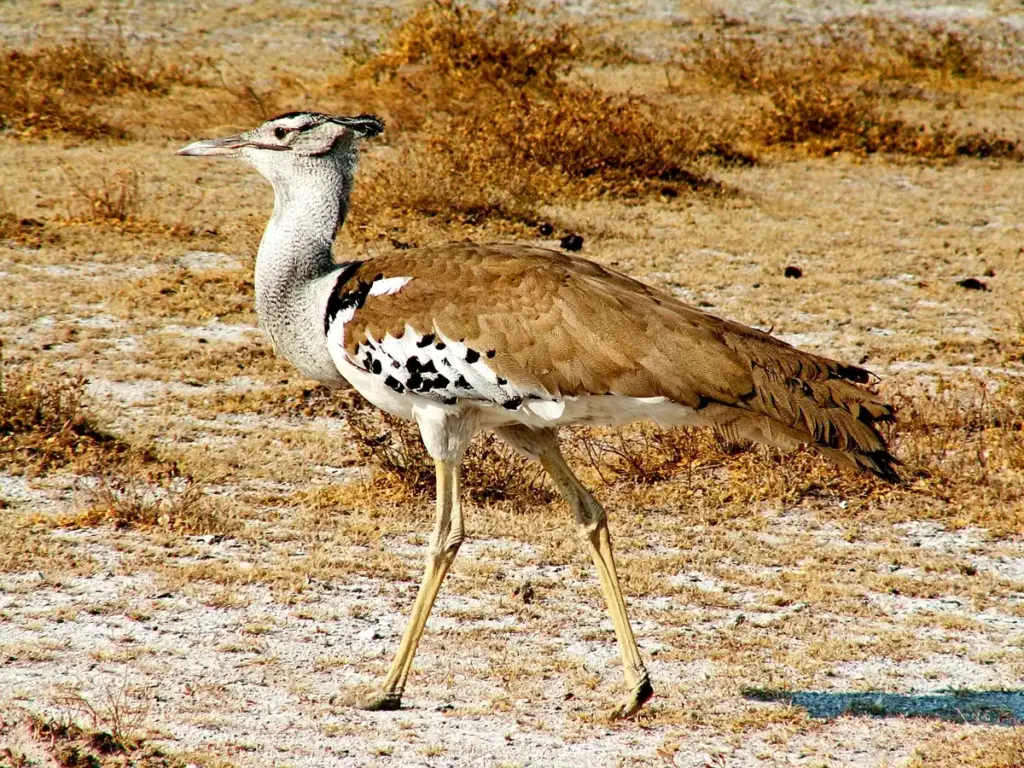
5. Kori Bustard (Ardeotis kori): Kori Bustard is the largest flying bird native to Africa, and is a heavyweight champion of the Serengeti grasslands. With its impressive size and cryptic plumage, this ground-dwelling bird blends seamlessly into its surroundings, relying on stealth and camouflage to evade predators.
Fun Fact: With a weight that can go up to 18kg (40lbs), a full-grown male Kori Bustard is one of the heaviest flying animals in the world.
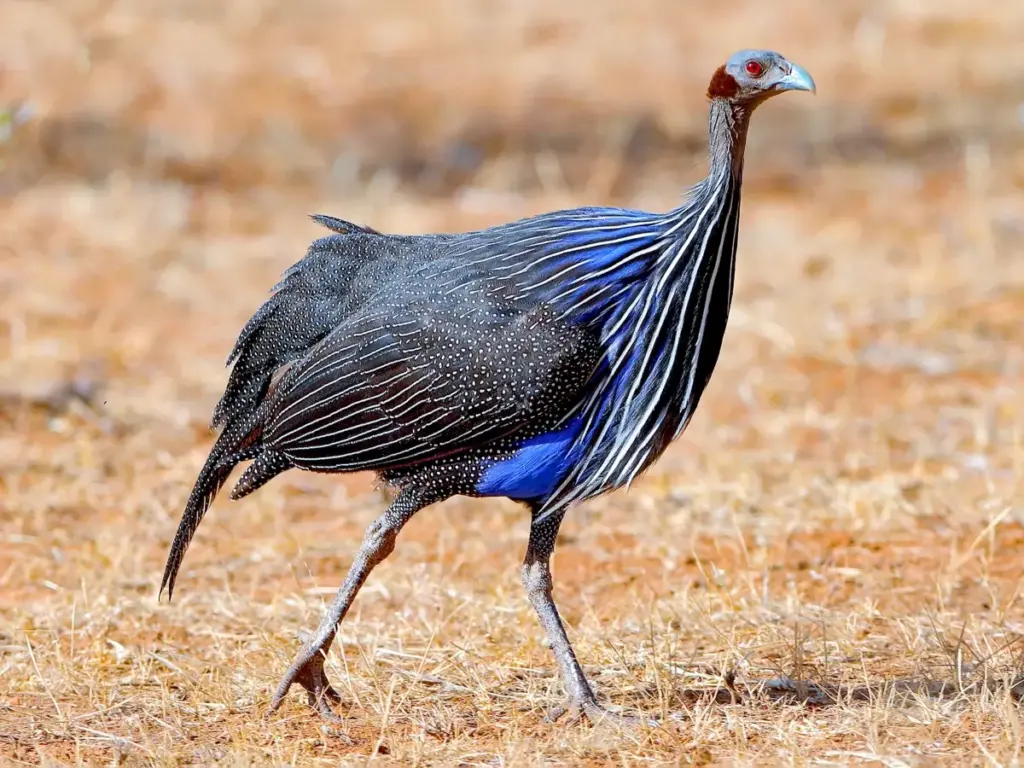
6. Vulturine Guineafowl (Acryllium vulturinum): The Vulturine Guineafowl, with its distinctive black and white plumage highlighted with cobalt blue, is a sight to behold as it searches for food across the wide-open plains. This species embodies the wild essence of the Serengeti with its unique appearance and loud sounds.
Fun Fact: Vulturine Guine birds display their acrobatic abilities by leaping high to catch insects or plucking appetizing morsels from low-hanging trees.
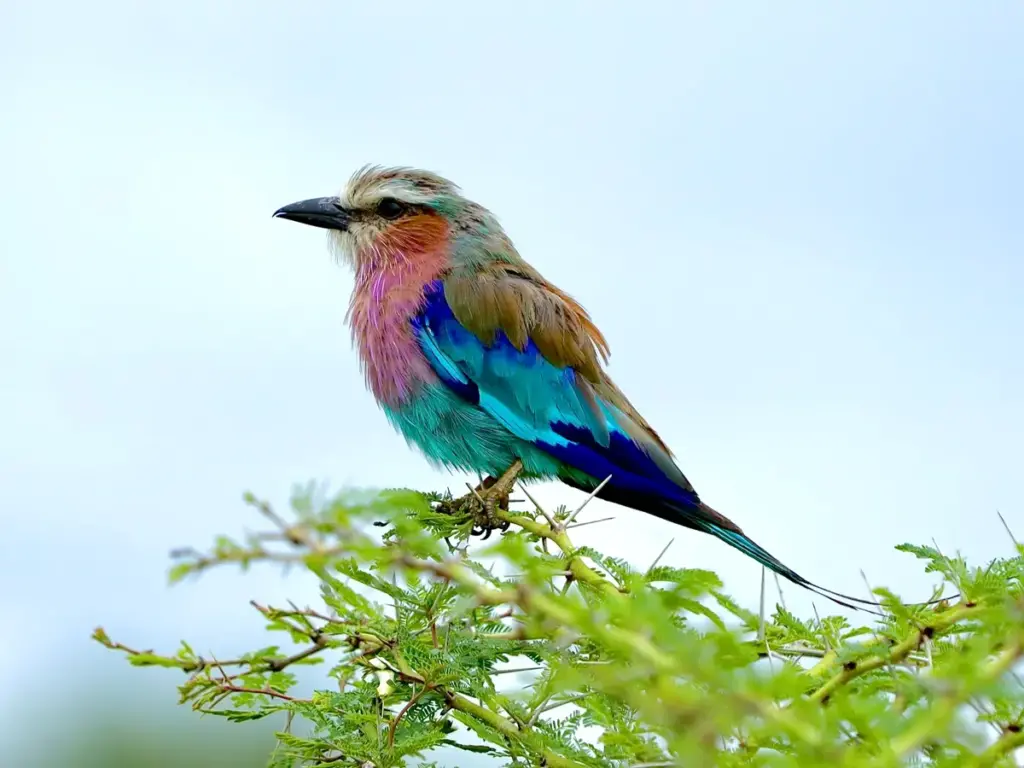
7. Lilac-breasted Roller (Coracias caudatus): With its striking plumage of lilac, blue, and green, a lot of people regard it as one of the most beautiful birds in the world, and those who see the lilac-breasted roller for the first time are often inspired to develop an interest in birding and bird watching.
Fun Fact: Lilac-breasted Rollers can accomplish a lot “on the fly”. They snap up flying insects on the go, perform fancy aerobatics (rolling), and might even mate mid-air without perching.
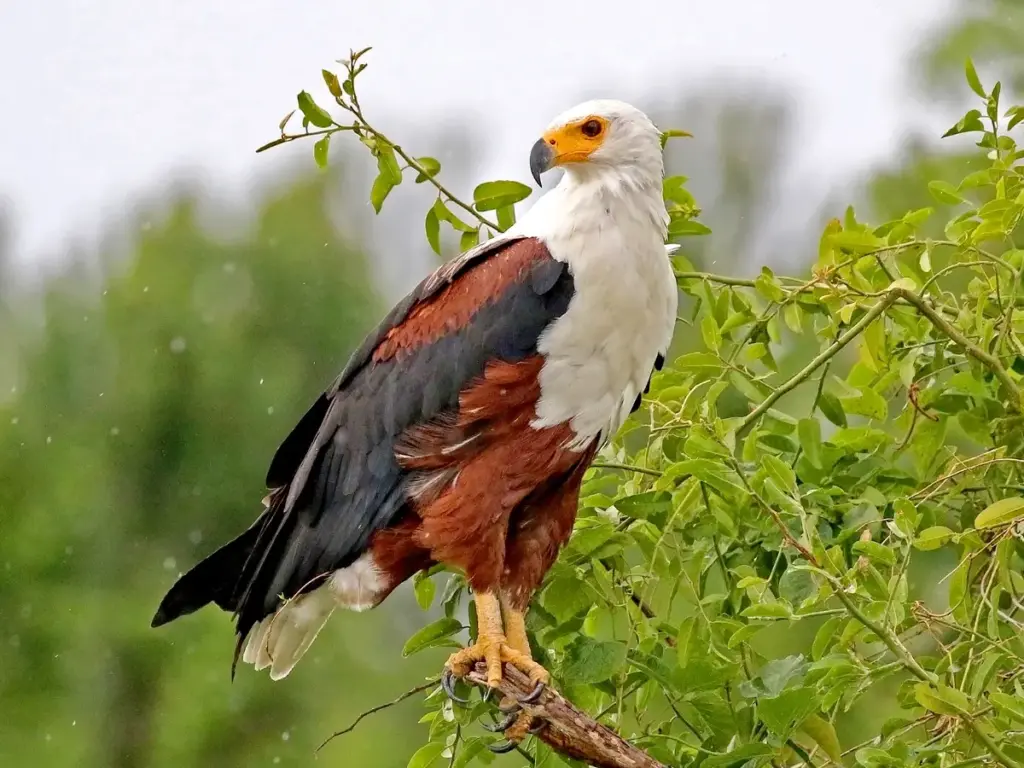
8. African Fish Eagle (Haliaeetus vocifer): With its piercing yellow eyes and hooked beak, the African Fish Eagle is a symbol of wilderness and freedom. Often found near rivers and lakes, this majestic raptor is renowned for its fishing prowess, swooping down from great heights to snatch fish from the water’s surface.
Fun Fact: The African Fish-eagle has the honor of being the national bird of three nations: Zambia, Zimbabwe, and South Sudan.
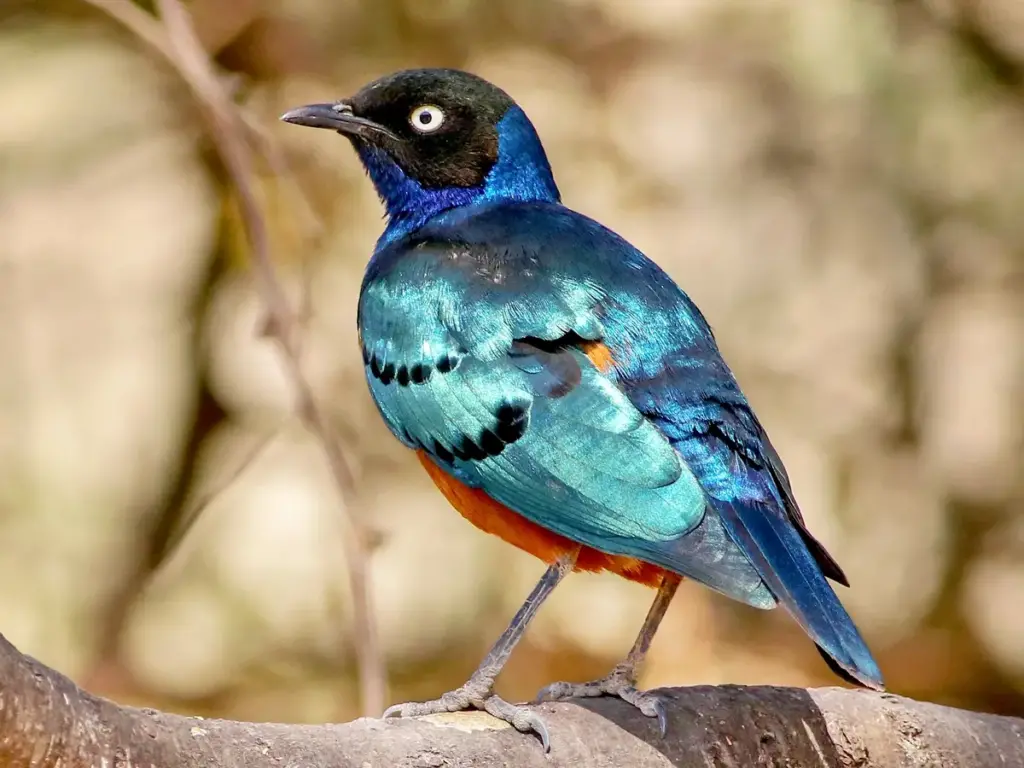
9. Superb Starling (Lamprotornis superbus): With its stunning color, the Superb Starling lives up to its name. It is adorned in shimmering tones of blue, green, and copper. These social birds are often seen in the Serengeti’s woodlands and savannas, where they form noisy flocks that flit among the trees.
Fun Fact: Superb starlings are cooperative breeders, meaning there are other ranks of pairs, such as nonbreeding and non-helping individuals, who are ranked at different levels.
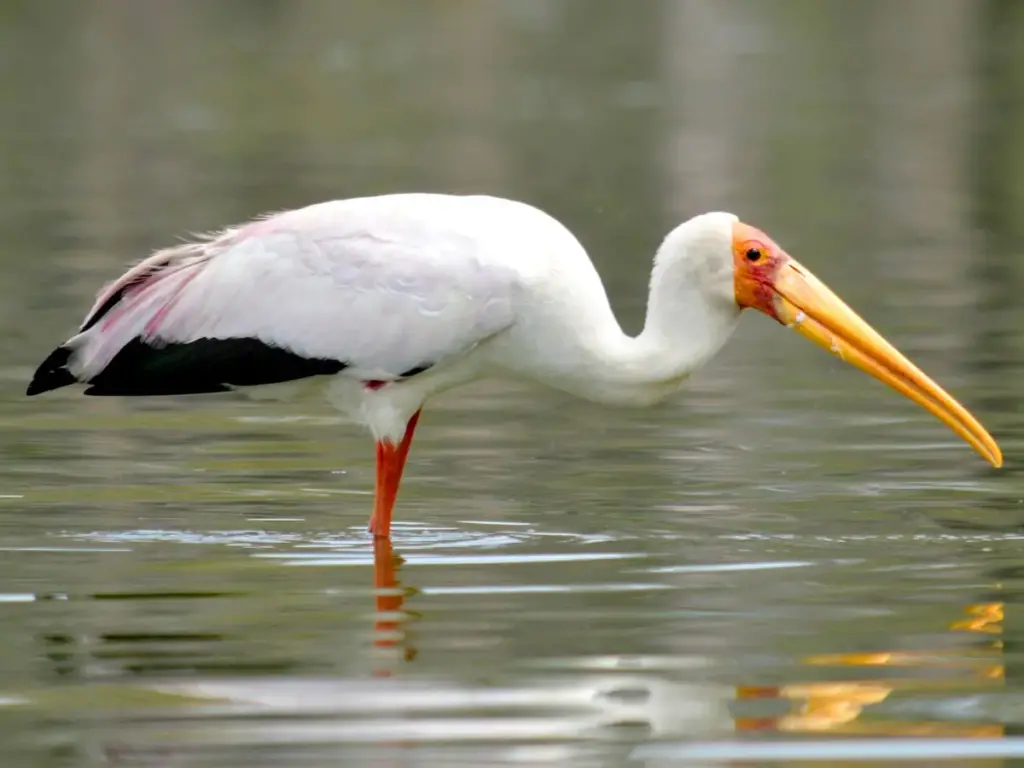
10. Yellow-billed Stork (Mycteria ibis): A common sight in the Serengeti’s rivers and marshes, the Yellow-billed Stork dives across shallow waters with slow, deliberate strides. This magnificent bird, with its striking yellow beak and graceful white color, stands in stark contrast to the park’s colorful scenery as a symbol of peace.
Fun Fact: Yellow-billed falcons construct large stick nests in trees or on cliffs when they are nesting in colonies. These colonies can become hive centers of activity during breeding season as adults come and go to tend to their young.
Birdwatching in the Serengeti National Park is an all-season affair, offering enthusiasts the opportunity to marvel at the birds year-round. For those seeking the ultimate safari experience, the period from November to April reigns supreme. During this time, the park comes alive with the sights and sounds of nesting activity among its resident bird species. Additionally, the arrival of migratory birds from Europe and North Africa adds an extra layer of excitement, providing visitors with a diverse array of feathered visitors to admire and study.
In the Serengeti, renowned for its grand wildlife, there is a whole other world above you, waiting to be explored. Even if you are not a dedicated bird enthusiast, exploring this African terrain will pique your interest in its fascinating feathered inhabitants.
As your safari unfolds, you will encounter bird species that you have never seen elsewhere, each one more striking and captivating than the last. Their unique colors and behaviors are sure to catch your eye and spark your curiosity, drawing you deeper into the world of Serengeti’s avian wonders.